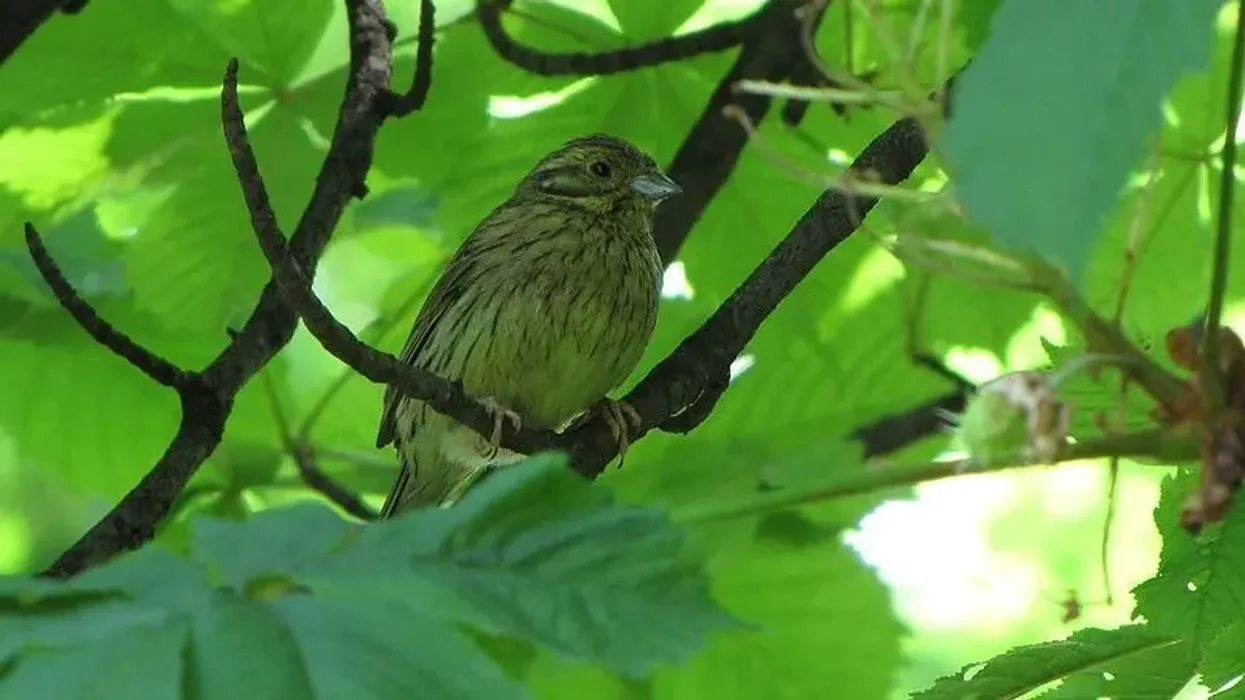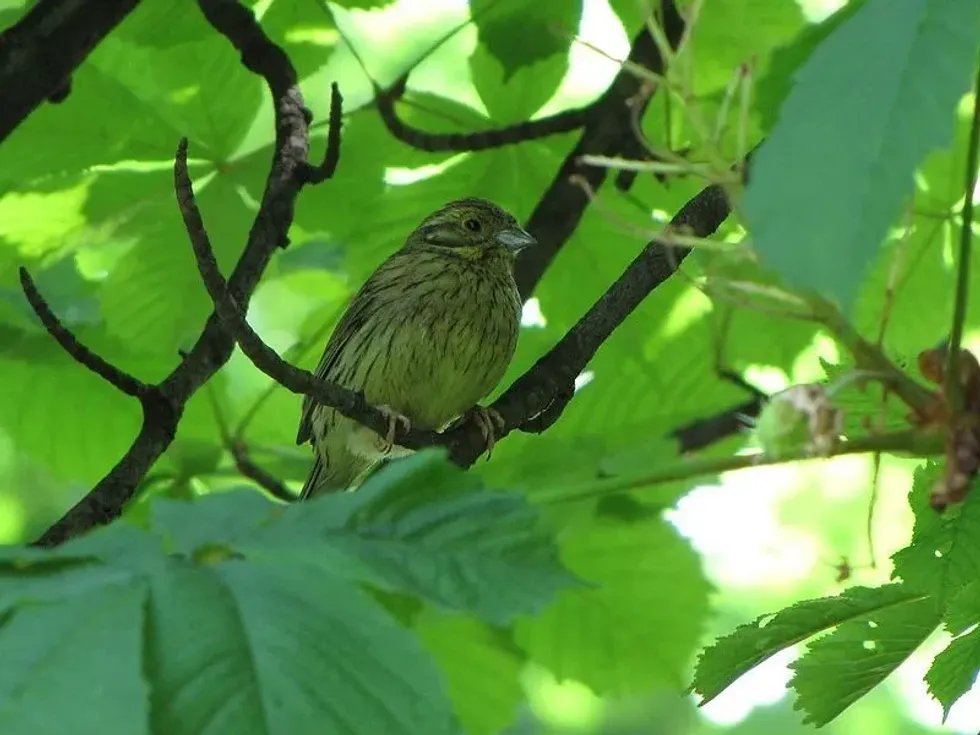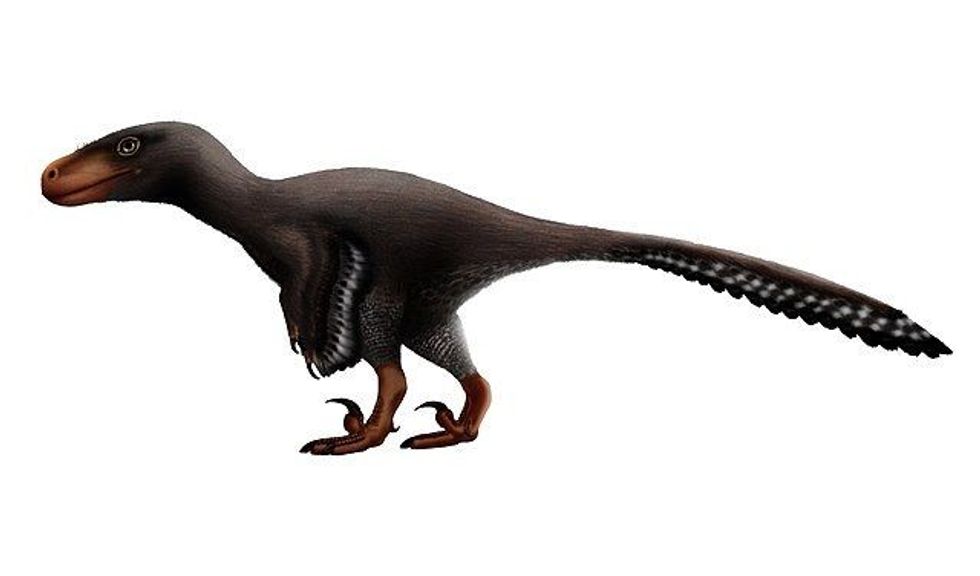The cirl bunting (Emberiza cirlus) is a passerine bird from low rainfall regions and pastureland across southern Europe, the Mediterranean Islands, north Africa, South Island in New Zealand, and England. This bird species is sedentary and the farthest traveling distance of this bird is 1.2 mi (2 km) to search for stubbles during the winter.
The breeding population of the cirl bunting is estimated to be around 4,000,000-9,000,000. These birds have two to three broods during the breeding season from April to mid-September and build their nest on the ground among scrub and bushes. Female birds of this species lays two to five white, brown-scribbled eggs and incubates them for 11-13 days.
The cirl bunting is an omnivore. These birds feed on seeds and small invertebrates. These birds show sexual dimorphism with duller plumage in the female. Cirl buntings make a rattle-like sound similar to the call of the lesser whitethroat.
If you have fallen in love with this adorable bunting species, take a look at the snow bunting and painted bunting.
Cirl Bunting Interesting Facts
What type of animal is a cirl bunting?
The cirl bunting (Emberiza cirlus) is a type of passerine bird species under the family Emberizidae.
What class of animal does a cirl bunting belong to?
The cirl bunting bird belongs to the class of Aves.
How many cirl buntings are there in the world?
The cirl bunting species population distribution is increasing according to the IUCN and can be measured around 4,000,000-9,999,999. England is home to over 3,000,000 breeding pairs.
Where does a cirl bunting live?
The cirl bunting population is spotted in the south region of Europe, England, the Mediterranean Islands, north Africa, and the South Island in New Zealand.
What is a cirl bunting's habitat?
The cirl bunting habitat includes dry, warm regions around farmland with sparse trees, short grass, scrub, and hedgerows. This species is also seen on low hill slopes and river terraces.
Who do cirl buntings live with?
There is no evidence about the living habits of cirl buntings, but when they feed during the winter, they forage in flocks.
How long does a cirl bunting live?
According to scientific research, the estimated lifespan of cirl buntings is around six years.
How do they reproduce?
The female and male cirl bunting mate between April to mid-September and can have up to three broods per breeding season. Female birds build a loosely woven nest on the ground among dense scrubs like hawthorn, gorse, blackthorn, and bramble or hedgerows.
This breeding resident is sedentary and does not migrate during the winter either. They will only move around 820 ft (250 m) away from the nest to forage for food and feed their young. The female lays two to four cream-white eggs that have scribble-like brown patterns, a feature all bunting eggs have.
The eggs hatch after an incubation of 11-13 days. Both the male and female look after and feed the chicks.
After the fledging period, the female will leave the first nest to make a new one while the male takes care of the first batch. The hatchlings can fly and leave the nest after 11-14 days.
What is their conservation status?
IUCN reports suggest that the global cirl bunting population distribution is on the rise. This is why they have been given the Least Concern status.
However, there is a tremendous decline in their population across the United Kingdom. The RSPB Cirl Bunting Project has made efforts toward conserving their population, and the number has gone from 118 pairs in 1989 to around 700 breeding pairs in 2003.
Cirl Bunting Fun Facts
What do cirl buntings look like?
The cirl bunting (Emberiza cirlus) color description is quite similar to the yellowhammer with the yellow and black-streaked plumage. The breeding male cirl bunting is black-streaked all over but has a prominent blackhead, a black band across its eye and ear-coverts, and a black bib-like patch on the throat just under its thick bill.
Males also have mustard yellow on their underparts with similar stripes below and above their eyes.
The male has a faded olive-green band across his breast. The female is duller with a brown-yellow shade with similar stripe distribution all over the plumage
The juveniles and females of this species have a distinct pattern on their ear-coverts that resemble a horseshoe. Cirl buntings have a gray-black, chunky bill like most birds that feed on seeds.
How cute are they?
Cirl buntings are small birds with a round head, cute pink feet, pointy tails, and short beak, making them look quite adorable.
How do they communicate?
The cirl bunting call is a rattling song, repeated nine times in a minute, similar to the call of the green ginch. They also have a high-pitched contact song when flocking together, and a loud chattering sound during territorial disputes.
How big is a cirl bunting?
The cirl bunting is between 5.9- 6.5 in (15-16.5 cm), making it three times smaller than the rook bird and half the size of a black cuckoo.
How fast can a cirl bunting fly?
The cirl bunting flight speed has not been recorded.
How much does a cirl bunting weigh?
The cirl bunting has a weight range between 0.7-1 oz (21-29 g).
What are the male and female names of the species?
Male and female cirl buntings do not have separate names.
What would you call a baby cirl bunting?
Just like most other birds, the cirl bunting baby is called a chick or juvenile.
What do they eat?
The cirl bunting diet includes a range of invertebrates and grass seeds found on the ground. They eat flies, ground beetles, moths, cicadas, spiders, aphids, and grasshoppers.
Are they dangerous?
The cirl bunting is anything but harmful. These gray-yellow birds keep to themselves and are not aggressive unless threatened.
Would they make a good pet?
No, the cirl bunting distribution is mainly seen in the wild among farmland, scrub, and scattered trees. Keeping them as pets would not be ideal.
Did you know...
The mascot on the signs of the Stokeinteignheaad village of Devon, England is the cirl bunting.
Do cirl buntings migrate?
No, this bird is sedentary and prefers a warm, summer climate. This bird only travels 1.2 mi (2 km) to forage for food during the winter.
Where can you see cirl buntings in Devon?
The cirl bunting Devon population is the only way of spotting this species in the United Kingdom. They can be seen in coastal farmland between Exeter and Plymouth. Labrador Bay Nature Reserves, south of Teignmouth, is another region to spot cirl buntings all through the year.
Here at Kidadl, we have carefully created lots of interesting family-friendly animal facts for everyone to discover! Learn more about some other birds from our wood thrush facts and lark sparrow facts pages.
You can even occupy yourself at home by coloring in one of our free printable cirl bunting coloring pages.









